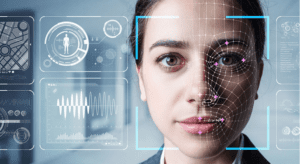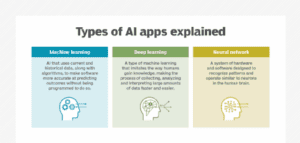
Importance and best uses of image recognition in 2023
What is image recognition?
Image recognition, in the context of machine vision, is the ability of software to identify objects, places, people, writing and actions in digital images. Computers can use machine vision technologies in combination with a camera and artificial intelligence (AI) software to achieve image recognition.
How does image recognition work?
While animal and human brains recognize objects with ease, computers have difficulty with this task. There are numerous ways to perform image processing, including deep learning and machine learning models. However, the employed approach is determined by the use case. For example, deep learning techniques are typically used to solve more complex problems than machine learning models, such as worker safety in industrial automation and detecting cancer through medical research.
Typically, image recognition entails building deep neural networks that analyze each image pixel. These networks are fed as many labeled images as possible to train them to recognize related images.
This process is typically divided into the following three steps:
A data set with images and their labels is gathered. For instance, a dog image needs to be identified as a “dog” or as something that people recognize.
A neural network will be fed and trained on these images. Convolutional neural network processors perform well in these situations, as they can automatically detect the significant features without any human supervision. In addition to multiple perceptron layers, these networks also include convolutional layers and pooling layers.
The image that isn’t in the training set is fed into the system to obtain predictions.

Image recognition use cases
Image recognition is used to perform many machine-based visual tasks, such as labeling the content of images with meta tags, performing image content search and guiding autonomous robots, self-driving cars and accident-avoidance systems.
The following are some prominent real-world use cases of image recognition:
Facial recognition. Facial recognition is used in a variety of contexts — social media, security systems and entertainment — and frequently involves identifying faces in photos and videos. For example, when someone uploads a photo of their friends on Facebook, the app instantly suggests the friends whom it believes are in that photo. Deep learning algorithms are used in facial recognition to evaluate a photo of a person and produce the accurate identity of the individual in the image. The algorithm can be expanded to extract important attributes such as age, gender and facial expressions of a person through their image. The facial recognition feature on smartphones, as well as computerized picture identity verification at security checkpoints such as airports or building entrances, are the most common applications of image recognition.
Visual search. Image search using keywords or visual features uses image recognition technology. For instance, Google Lens enables users to conduct image-based searches and Google’s Translate app offers real-time translation by scanning text from photographs. These technological advancements enable consumers to conduct real-time searches. For instance, if someone finds a flower at a picnic and is interested in learning more about it, they can simply take a photo of the flower and use the internet to look up information on it right away.
Medical diagnosis. Using image recognition technology, healthcare professionals and clinicians examine medical imaging to diagnose diseases and conditions. For example, image recognition software can be trained to analyze and spot patterns in data from MRI or X-ray devices. This enables clinicians to find, detect and report medical abnormalities at an early stage. Radiology, ophthalmology and pathology are three fields that frequently use image recognition for medical diagnosis.
Quality control. Traditional manual quality inspection is labor-intensive, time-consuming and error prone. However, using a set of annotated photos of a product of interest, an artificial intelligence model or neural network can be trained to automatically spot patterns of malfunctioning equipment. As a result, it’s possible to identify and isolate items that don’t meet the standards, thus improving overall quality of the product.
Fraud detection. The fraud detection procedure can be automated and enhanced with the use of AI photo recognition tools. For example, one method of detecting fraud is to use an AI image recognition tool to process checks or other documents submitted to banks. To assess the authenticity and legality of a check, the computer analyzes scanned images of it to extract crucial data such as the account number, check number, check amount and the account holder’s signature.
People identification. Government agencies, law enforcement and other security agencies use image recognition to identify and collect information about individuals in photographs and videos.
Current and future applications of image recognition include smart photo libraries, targeted advertising, interactive media, accessibility for the visually impaired and enhanced research capabilities.
Types of image recognition?
Training image recognition systems can be performed in one of three ways — supervised learning, unsupervised learning or self-supervised learning. Usually, the labeling of the training data is the main distinction between the three training approaches.
Supervised learning. This type of image recognition uses supervised learning algorithms to distinguish between different object categories — such as a person or a car — from a collection of photographs. A person can use the labels “car” and “not car,” for instance, if they want the image classification system to recognize photographs of cars. With this type of image recognition, both categories of images are explicitly labeled in the input data before the images are fed into the system.
Unsupervised learning. An image recognition model is fed a set of images without being told what the images contain. As a result, the system determines, through analysis of the attributes or characteristics of the images, the important similarities or differences between the images.
Self-supervised learning. Self-supervised training is frequently considered a subset of unsupervised learning because it also uses unlabeled data. It’s a training model where learning is accomplished using pseudo-labels created from the data itself. It enables a person to learn to represent the data with less precise data. With this as a starting point, a machine can be taught to imitate human faces using self-supervision, for example. After the algorithm has been trained, supplying additional data causes it to generate completely new faces.
